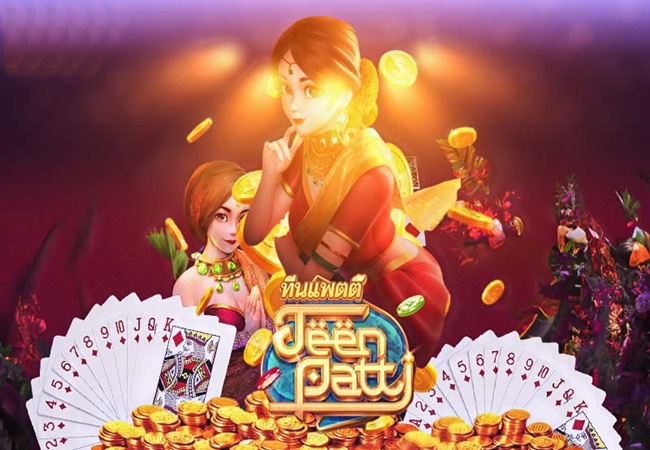
Teen Patti, often referred to as “Indian Poker,” has a rich history and cultural significance in India. This card game is a beloved pastime, especially during festivals and family gatherings. In the state of Chhattisgarh, Teen Patti is more than just a game; it is a cultural tradition that brings people together, reflecting the vibrant social fabric of the region. Teen Patti India showcases the game’s widespread appeal and integral role in Indian culture.
Historical Context
Teen Patti, also known as Flush or Flash, traces its origins to the Indian subcontinent. The game is believed to have evolved from the British card game “Three-card Brag,” and it shares similarities with poker. Over time, Teen Patti has become deeply ingrained in Indian culture, celebrated for its blend of luck, strategy, and social interaction.
In Chhattisgarh, Teen Patti’s history is intertwined with the state’s cultural practices and festivals. The game is especially popular during Diwali, the festival of lights, where families and friends gather to play and celebrate together. The joyous atmosphere of Diwali, coupled with the excitement of Teen Patti, creates a unique and memorable experience for many.
Rules and Gameplay
Teen Patti is played with a standard 52-card deck, without jokers. The game can accommodate three to six players, making it ideal for small gatherings. The objective is to have the best three-card hand and maximize the pot before the showdown. Here’s a brief overview of how the game is played:
- Ante and Dealing: Each player contributes an initial bet, known as the ante. The dealer then deals three cards face down to each player.
- Betting Rounds: Players take turns betting, calling, raising, or folding. Betting continues until only two players remain or everyone folds except one player.
- Showdown: If two players remain after the betting rounds, a showdown occurs where both reveal their cards. The player with the highest-ranking hand wins the pot.
The hand rankings in Teen Patti are similar to those in poker, with the highest being a trail (three of a kind), followed by a pure sequence (straight flush), sequence (straight), color (flush), pair, and high card.
Cultural Significance in Chhattisgarh
In Chhattisgarh, Teen Patti is more than just a game; it is a cultural phenomenon that fosters community bonding and celebration. The game is a staple during major festivals like Diwali, Holi, and local fairs, where people of all ages participate. The convivial atmosphere during these gatherings is palpable, as laughter, banter, and the thrill of the game create an environment of joy and camaraderie.
Teen Patti also serves as a social equalizer in Chhattisgarh. Regardless of social or economic status, people come together to play, interact, and enjoy each other’s company. This inclusivity is a testament to the game’s role in breaking down barriers and promoting unity within the community.
The Role of Technology
In recent years, technology has significantly impacted the way Teen Patti is played in Chhattisgarh. The advent of online Teen Patti platforms has made the game accessible to a broader audience. Mobile apps and websites offer virtual versions of Teen Patti, allowing players to connect and play with friends and strangers alike, regardless of geographical location.
Online Teen Patti has introduced new dynamics to the traditional game. Players can participate in tournaments, compete for virtual rewards, and even engage in live games with dealers. This digital transformation has ensured that Teen Patti remains relevant and continues to thrive in the modern age.
Legal and Ethical Considerations
While Teen Patti is a cherished cultural activity, it also raises legal and ethical considerations. In India, gambling laws vary by state, and Chhattisgarh is no exception. Teen Patti is often played for money, which can blur the lines between social gaming and gambling. It is essential for players to be aware of the legal implications and exercise caution to avoid potential issues.
Ethically, responsible gaming is crucial. Teen Patti, like any form of gambling, can lead to addictive behavior if not managed properly. Promoting awareness about responsible gaming practices and ensuring that players engage in the game for fun and social interaction, rather than financial gain, is vital.
Teen Patti in Popular Culture
Teen Patti has permeated popular culture in Chhattisgarh and across India. It is frequently depicted in films, television shows, and literature, often symbolizing luck, strategy, and the unpredictability of life. The game’s presence in the media reflects its significance and enduring popularity.
In Bollywood, Teen Patti has been featured in numerous movies, highlighting its role in Indian society. Films like “Teen Patti” (2010), starring Amitabh Bachchan and Ben Kingsley, explore themes of probability, risk, and the human element in gambling, bringing the game’s cultural relevance to a broader audience.
Conclusion
Teen Patti in Chhattisgarh is a cultural treasure, deeply rooted in tradition and community spirit. It is a game that transcends generations, bringing people together in celebration and camaraderie. As the state continues to embrace both its cultural heritage and modern advancements, Teen Patti remains a beloved pastime that reflects the vibrant social fabric of Chhattisgarh.
Whether played around a table during festive gatherings or on a smartphone app, Teen Patti’s allure lies in its blend of luck, strategy, and social interaction. It is a game that not only entertains but also fosters connections, making it an enduring symbol of unity and joy in Chhattisgarh and beyond.
